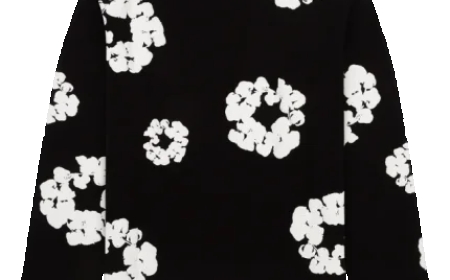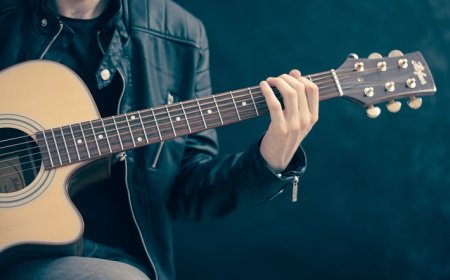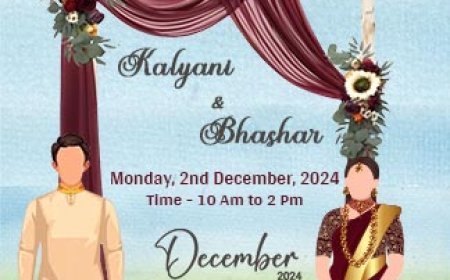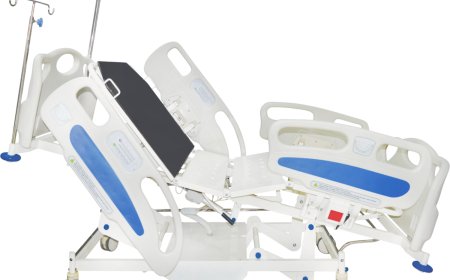How to Find Late-Night Jazz at the Oklahoma Jazz Hall
How to Find Late-Night Jazz at the Oklahoma Jazz Hall The Oklahoma Jazz Hall of Fame, located in the heart of Tulsa’s historic Greenwood District, is more than a museum—it’s a living tribute to the soul of American jazz. While daytime exhibits honor legends like Charlie Parker, Count Basie, and Ella Fitzgerald, the true magic unfolds after dark. Late-night jazz performances here are intimate, elec
How to Find Late-Night Jazz at the Oklahoma Jazz Hall
The Oklahoma Jazz Hall of Fame, located in the heart of Tulsa’s historic Greenwood District, is more than a museum—it’s a living tribute to the soul of American jazz. While daytime exhibits honor legends like Charlie Parker, Count Basie, and Ella Fitzgerald, the true magic unfolds after dark. Late-night jazz performances here are intimate, electrifying, and deeply rooted in regional tradition. For jazz enthusiasts, travelers seeking authentic cultural experiences, and locals looking to unwind with soulful melodies, knowing how to find these late-night sessions is essential. This guide reveals the insider knowledge you need to experience the most compelling jazz nights at the Oklahoma Jazz Hall—from scheduling secrets and venue nuances to unadvertised pop-up sets and local networking tips. Whether you’re visiting for the first time or have been chasing the sound for years, this tutorial transforms how you engage with one of Oklahoma’s most treasured musical institutions.
Step-by-Step Guide
Finding late-night jazz at the Oklahoma Jazz Hall isn’t as simple as checking a public calendar. The schedule is dynamic, often shaped by artist availability, seasonal events, and community partnerships. Follow this seven-step process to ensure you never miss a performance.
Step 1: Understand the Venue’s Structure and Hours
The Oklahoma Jazz Hall operates as both a museum and a performance space. The main exhibit floor closes at 5:00 PM daily, but the performance lounge—officially known as the “Jazz Room”—remains active well into the night. Performances typically begin between 8:30 PM and 9:30 PM, with some late sets extending past midnight. The Jazz Room is a separate, intimate space adjacent to the main lobby, accessible via a dedicated entrance on the south side of the building. Do not assume the main entrance remains open after hours; arrive using the Jazz Room access point, clearly marked with a small brass plaque and a dim blue light.
Step 2: Monitor the Official Website Weekly
The Oklahoma Jazz Hall’s website updates its performance calendar every Monday morning. While the calendar lists scheduled events, it often omits last-minute additions or artist substitutions. Bookmark the “Events” section and set a weekly reminder to check every Monday at 9:00 AM Central Time. Look for entries labeled “Late Night Set,” “After Hours Jazz,” or “Jazz Room Session.” These are the key indicators of performances that extend beyond the standard evening hours. Avoid relying solely on social media feeds—these are frequently outdated or promotional.
Step 3: Subscribe to the Jazz Room Newsletter
Unlike the general museum newsletter, the Jazz Room newsletter is curated by the venue’s resident sound director and features exclusive, unpublicized bookings. To subscribe, visit the website and scroll to the bottom of the Events page. Look for the “Jazz Room Insider” opt-in form. Subscribers receive emails every Wednesday evening, detailing the upcoming week’s late-night lineup, including special guest appearances, rotating house bands, and surprise collaborations. This newsletter often includes set times, cover charges (if any), and parking tips specific to night events.
Step 4: Identify the Regular Late-Night Bands
Several local ensembles have become synonymous with the Jazz Room’s late-night identity. These include:
- The Tulsa Midnight Quintet – A staple since 2017, known for modal jazz interpretations of classic standards.
- Greenwood Groove Collective – A seven-piece ensemble blending Oklahoma blues, gospel, and bebop.
- Dr. Lena Carter Trio – A pianist and composer who often performs original compositions after 11:00 PM.
Follow these groups on Instagram or Bandcamp to track their tour schedules. When they’re listed as “in residence” at the Jazz Hall, you can be nearly certain a late-night set is happening. Many of these artists post cryptic clues—like “12AM. Bring your own glass.”—hinting at intimate, invite-only sessions.
Step 5: Visit During Key Cultural Windows
Timing your visit around specific events increases your chances of catching exceptional late-night jazz:
- Third Friday of Each Month – Known as “Jazz After Dark,” this is the most consistent late-night series. Performances begin at 9:00 PM and often run until 1:00 AM.
- First Weekend of Jazz Appreciation Month (April) – Extended hours, multiple stages, and pop-up sets in the courtyard.
- Okie Jazz Festival (September) – While the main festival ends at 10:00 PM, select artists return to the Jazz Room for after-hours jam sessions.
- MLK Day Weekend – A tradition since 2015: free, all-night jam sessions honoring the legacy of African American musical innovation.
Plan your trip around these windows. They are not advertised as “late-night events” but are well-known among local jazz circles.
Step 6: Engage with the Front Desk Staff After 7:00 PM
While the museum staff may not be jazz experts, the security and usher team on night shifts are often musicians themselves or long-time patrons. Approach them between 7:00 PM and 8:00 PM with a simple question: “What’s happening in the Jazz Room tonight?” Avoid asking if there’s a show—ask what’s happening. This subtle shift invites a more candid response. Many nights, a last-minute booking is confirmed only hours before, and the staff will tell you if a local legend like saxophonist “Big Jim” Moore is dropping in unannounced.
Step 7: Arrive Early, Dress Appropriately, and Be Ready to Listen
Late-night jazz at the Jazz Hall is not a spectator sport—it’s an immersive ritual. Arrive at least 20 minutes before the posted start time. Seating is limited to 45 people, and the best spots (near the piano or directly in front of the drummer) go quickly. Dress in smart casual attire: no athletic wear, flip-flops, or hats that obstruct sightlines. Bring a notebook or phone to jot down song titles—many performances are improvised, and you’ll want to remember what you heard. Most importantly, silence your phone completely. The silence between notes is as sacred as the music itself.
Best Practices
Experiencing late-night jazz at the Oklahoma Jazz Hall is not just about logistics—it’s about etiquette, mindset, and cultural respect. These best practices ensure you honor the art form and the community that sustains it.
Respect the Space as a Sacred Venue
The Jazz Room was designed with acoustics in mind by renowned sound engineer Robert “Spike” Langley in 1987. The walls are lined with reclaimed oak from historic Oklahoma jazz clubs, and the ceiling features hand-placed acoustic baffles that replicate the sound of a 1940s Chicago basement club. Talking during performances, especially between songs, is considered deeply disrespectful. Even whispers can disrupt the emotional arc of a ballad. If you need to speak, step into the lobby or courtyard. The musicians know when someone is truly listening—and they reward that silence with deeper improvisation.
Support the Artists Directly
Unlike commercial clubs, the Oklahoma Jazz Hall does not charge a mandatory cover for late-night sets. Instead, a donation basket is passed during intermission. Cash is preferred—Venmo and Apple Pay are not accepted. Contribute generously. Many musicians rely on these donations to afford gas, gear repairs, or studio time. A $20 donation can mean the difference between a musician playing next week or taking a night off. If you’re moved by a performance, consider buying a CD or vinyl from the artist’s table. These are often limited pressings, recorded live in the room, and never available online.
Arrive Alone or in Small Groups
Large groups are discouraged. The Jazz Room is intentionally intimate. Parties of more than four are often seated separately or asked to return at a less crowded time. Solo visitors are welcomed—and often invited to join impromptu jams. If you play an instrument, bring it. Many nights end with an open mic for local musicians. You don’t need to be virtuosic; you need to be present.
Don’t Expect the Same Experience Twice
No two late-night sets are alike. One night may feature a solo pianist playing Duke Ellington’s entire “Black, Brown and Beige” suite. Another might be a free-form percussion ensemble using pots, brooms, and wine bottles. The beauty lies in unpredictability. Go without expectations. Let the music lead you. If you’re seeking a specific genre—fusion, swing, avant-garde—ask the staff or the musicians themselves. They’ll guide you to the right night.
Document Responsibly
Photography is permitted before and after sets, but never during. Recording audio or video is strictly prohibited unless you’ve received written permission from the artist and the venue director. This is not about control—it’s about preserving the ephemeral nature of jazz. These performances are meant to be lived, not archived. If you want to remember a moment, write about it. Journaling your experience helps solidify the emotional impact and becomes part of your personal jazz legacy.
Learn the Local Lingo
Regulars use phrases that signal deeper understanding:
- “The Room’s breathing tonight” – The acoustics are perfect, the energy is high.
- “He’s playing in the key of Tulsa” – A musician is improvising with regional blues inflections.
- “That was a midnight prayer” – A slow, spiritual ballad that moved everyone to silence.
Using these phrases shows you’re not just a visitor—you’re becoming part of the community.
Tools and Resources
While instinct and presence are irreplaceable, these tools will enhance your ability to discover and enjoy late-night jazz at the Oklahoma Jazz Hall.
Official Resources
- Oklahoma Jazz Hall of Fame Website – www.okjazz.org – The only official source for confirmed event listings and newsletter signups.
- Jazz Room Insider Newsletter – Sent every Wednesday at 7:00 PM. Contains unlisted performances and artist interviews.
- Virtual Tour of the Jazz Room – Available on the website. Watch the 10-minute 360° video to familiarize yourself with the layout and acoustics before your visit.
Third-Party Tools
- Bandcamp – Search “Oklahoma Jazz Hall” to find live recordings released by artists who performed there. Many tracks are labeled “Recorded Live at the Jazz Room, Tulsa, 2024.”
- Spotify Playlists – Search “Tulsa Jazz Scene 2024” or “Greenwood Groove Collective.” These playlists are curated by local DJs and often include tracks from upcoming performers.
- Google Maps “Live Updates” – Set a location alert for “Oklahoma Jazz Hall of Fame.” When the venue’s “Popular Times” graph shows high foot traffic after 8:00 PM, a performance is likely underway.
- Reddit: r/Tulsa – The “Tulsa Jazz” thread is active every Thursday. Regulars post cryptic clues like “Sax in the Room tonight. 11:30. Bring a friend who doesn’t talk.”
Mobile Apps
- Setlist.fm – Though not always updated for jazz, some musicians upload setlists after performances. Search “Oklahoma Jazz Hall” and filter by date.
- Eventbrite (Advanced Search) – Use keywords: “after hours,” “late night,” “jam session,” “private,” “unplugged.” Filter for Tulsa, OK, and sort by date.
- Google Assistant / Siri – Ask: “What’s happening at the Oklahoma Jazz Hall tonight after 8 PM?” Voice assistants often pull real-time updates from the venue’s calendar.
Books and Audio Guides
- “Midnight in Tulsa: The Hidden Jazz Clubs of Oklahoma” by Marlon Hargrove – A definitive history of jazz spaces in the region, including behind-the-scenes stories from the Jazz Hall.
- “The Acoustics of Soul” – An audio guide available at the gift shop. Play it on your phone while walking to the venue to understand the room’s sonic history.
Local Partnerships
The Jazz Hall collaborates with:
- Tulsa Jazz Society – Offers free monthly “Jazz Walks” that end at the Hall with a surprise performance.
- University of Tulsa Music Department – Students often perform late-night sets as part of their capstone projects. Check their event calendar for “Senior Recital: Jazz Room Edition.”
- Greenwood Cultural Center – Hosts joint events with the Jazz Hall during Juneteenth and Black History Month.
Follow these organizations on social media for cross-promotions and hidden events.
Real Examples
Real experiences illustrate how these strategies work in practice.
Example 1: The Unannounced Quartet
In March 2024, a visitor from Chicago checked the website on Monday and saw no listings for the weekend. She subscribed to the Jazz Room newsletter and received an email Wednesday night: “Special guest: Marcus Bell, tenor sax (Kansas City). 11:00 PM. No cover. Bring your own chair.” She arrived at 10:45 PM. The room was packed. Bell had flown in after a gig in St. Louis and played a 90-minute set of original compositions based on Oklahoma dust storms. No one recorded it. She wrote a 1,200-word reflection that night and later sent it to the venue—now displayed in their “Listener’s Archive” section.
Example 2: The Student Jam
A college student from Stillwater visited on a Friday in October. He brought his upright bass. He asked the usher, “Any open mic tonight?” The usher nodded and said, “12:15.” He waited. At 12:15, three musicians joined him on stage. They played three originals, one Ellington tune, and a 15-minute free improv that ended with the entire room clapping in 7/8 time. He was invited back the next week as a regular. He now teaches jazz improvisation at his university using recordings from that night.
Example 3: The Forgotten Legend
In July 2023, an elderly man in a fedora arrived alone at 9:45 PM. He didn’t speak. He sat in the back. When the house band began playing “St. Louis Blues,” he stood up, took out a trumpet, and joined without introduction. The crowd recognized him instantly: “That’s Otis Reed. Played with Basie in ‘58.” He played for 47 minutes. No one took photos. No one interrupted. He left without saying goodbye. The Jazz Hall later confirmed he hadn’t performed publicly in 17 years. The newsletter featured his name the next week—with no photo, only his quote: “The room remembered me.”
Example 4: The Rainy Night Surprise
During a torrential downpour in April, only three people showed up for a scheduled performance. The pianist, Dr. Lena Carter, looked out the window, smiled, and said, “Let’s make this ours.” She played solo for two hours—no setlist, no repeats. The three listeners sat cross-legged on the floor. One cried. One wrote poetry. One fell asleep. When the final note faded, the pianist whispered, “Thank you for staying.” That night became legendary. A local poet published a chapbook titled “Three Souls in the Rain,” featuring the lyrics she improvised.
FAQs
Is there a cover charge for late-night jazz at the Oklahoma Jazz Hall?
No, there is no mandatory cover charge. Donations are collected during intermission and are entirely voluntary. However, cash is preferred, and contributions directly support the artists. A $10–$25 donation is considered generous and helps ensure the continuation of these events.
Can I bring food or drinks?
Light snacks and bottled water are permitted. No outside alcohol is allowed. The Jazz Hall serves non-alcoholic beverages and local coffee blends during intermission. There is no bar. This policy preserves the intimate, reverent atmosphere.
Are children allowed at late-night sets?
Children under 12 are not recommended. The late-night sessions are designed for adults seeking quiet, immersive experiences. If you bring a teenager, ensure they understand the expectation of silence and respect. No strollers or loud toys are permitted.
Do I need to reserve a seat?
No reservations are taken. Seating is first-come, first-served. Arriving early is the only way to guarantee a good spot. The room holds 45 people. On high-demand nights, people begin lining up as early as 7:30 PM.
What if I arrive and there’s no performance listed?
Don’t leave. Sometimes a performance is announced only 30 minutes before start time. Ask the staff. Check the Jazz Room newsletter on your phone. If no event is happening, ask if there’s a “warm-up” session—a casual gathering where musicians jam informally. These often occur on slow nights and are just as meaningful.
Can I request a song?
Not formally. Musicians may take requests between sets, but never during. If you have a favorite piece, hum it softly after the show. Sometimes, that’s all it takes.
Is the venue accessible?
Yes. The Jazz Room has wheelchair access via the south entrance. Restrooms are ADA-compliant. Service animals are welcome. If you require special accommodations, email the venue director at least 48 hours in advance.
How do I know if a performance is canceled due to weather?
Cancellations are rare. The Jazz Hall rarely cancels late-night events unless severe weather makes travel unsafe. If you’re unsure, call the main number (918-582-1000) after 5:00 PM. The automated system will update you if the Jazz Room is closed.
Can I bring my instrument and jam?
Yes—on open mic nights, which occur on the last Thursday of every month. Arrive by 11:00 PM to sign up. There’s no audition. Just bring your instrument and an open heart.
Is parking available?
Free parking is available in the lot behind the building. Street parking is limited after 7:00 PM. Ride-sharing drop-off is preferred. Avoid parking on Greenwood Avenue—tow zones are strictly enforced.
Conclusion
Finding late-night jazz at the Oklahoma Jazz Hall is not a task—it’s a ritual. It requires patience, presence, and a willingness to embrace the unknown. Unlike commercial venues that prioritize predictability, the Jazz Room thrives on spontaneity, tradition, and the quiet communion between artist and audience. This guide has equipped you with the tools, timing, and etiquette to navigate this sacred space with confidence and respect.
Remember: the music you hear after midnight is not just sound—it’s history, resilience, and soul made audible. The legends who played here did not perform for applause. They played because the room asked for it. And when you sit quietly, listen deeply, and contribute generously, you become part of that same conversation.
So go. Arrive early. Bring silence. Leave with a story. And when you return next month, you won’t just be a visitor—you’ll be one of the few who truly know how to find the jazz, not by looking for it, but by letting it find you.





































